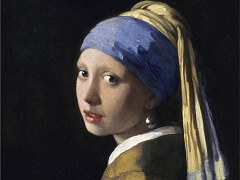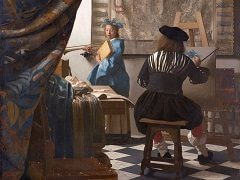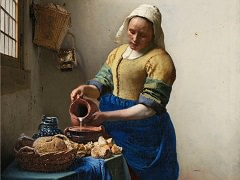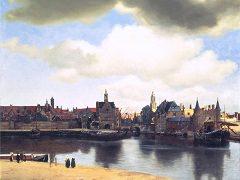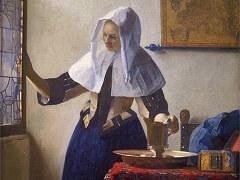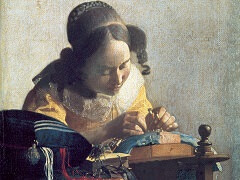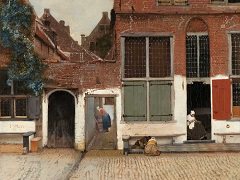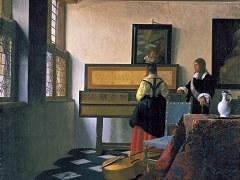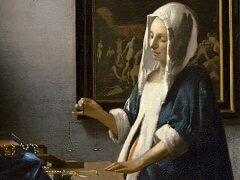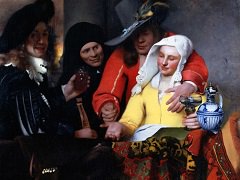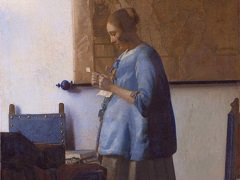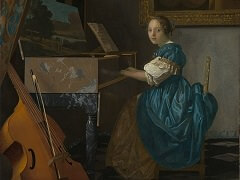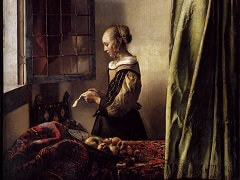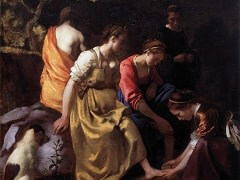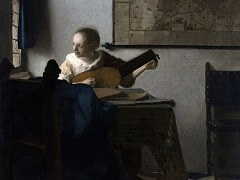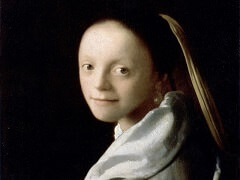The Astronomer, 1668 by Johannes Vermeer
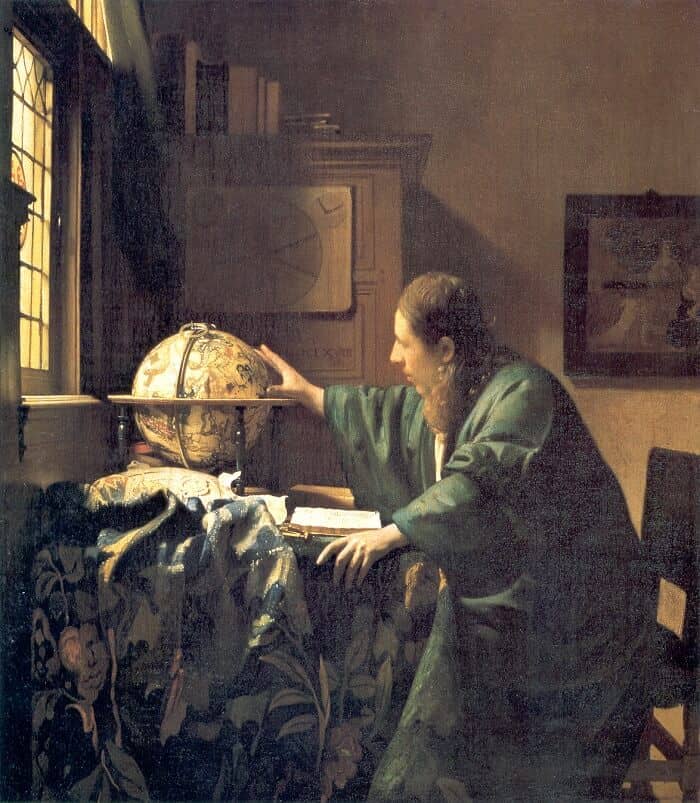
The most intriguing link is that which lies latent in two paintings by Vermeer. In 1667 and 1668, a man in his late thirties posed for the painter as he worked on two seemingly associated pictures with scientific themes. These
were Vermeer's only two paintings - at least the only two to survive - with solitary male figures as their protagonists; today the pictures are called The Astronomer and The Geographer,
though the titles have varied in the past. In 1713 they were auctioned as "A work depicting a Mathematical Artist, by Vander Meer"and "A ditto by the same". When they came up for sale again a few years later they were described
as "An Astrologer" and "A repeat" - i.e. another one of the same profession - and were referred to as 'extra choice'. Later still, the 'Geographer' as he is now called was re-identified as '"an Architect" or "a Surveyor".
Obviously Vermeer intended the two men to be scholarly types. Although the "Astronomer" has no telescope, he is shown touching a celestial globe, and the 'Geographer' holds a pair of compasses or dividers and has a terrestrial
globe nearby; both men have books to band.
Indeed, a slightly idealized air permeates the pictures, which were probably commissioned work and thus balanced uneasily between the needs of client and painter. Some of the professional equipment may have been borrowed, including
the cross-staff that hangs in deep shadow from the centre post of the window frame in The Geographer; such a staff could be used to measure heights or the angle of elevation of the sun. The date of 1669 now seen on
The Geographer isn't original, though it is thought to reflect the date the picture was painted. That year, 1669, happens to be when Antony van Leeuwenhoek qualified as a landmeter or surveyor.
The model in both pictures appears to be the same man. He has a large, long, straight nose and full lips. Moreover, although there are differences in detail between the rooms the two scientists inhabit - a section of stained-glass
window in one and not in the other; the table carpets; a curtain moved from one side of the casement to the other - the actual room seems to be the same, with the same corner cupboard. The globes in the paintings, one celestial, o
ne terrestrial, were a pair marketed by Jodocus Hondius in 1600. The book lying in front of the astronomer has been identified as the 1621 second edition of a work by Adriaen Metius, On the Investigation or Observation of the
Stars, and it is open at the beginning of Book III, where not only knowledge of geometry and the aid of mechanical instruments are recommended for this research but also "inspiration from God". The painting that hangs on the wall
behind the astronomer has for its subject the Finding of Moses, and perhaps acknowledges the same need for divine inspiration. Moses was described in the Acts of the Apostles as "learned in all the wisdom of Egypt" - a body of
wisdom that would have included astronomy - and was also considered to be "the oldest geographer",

